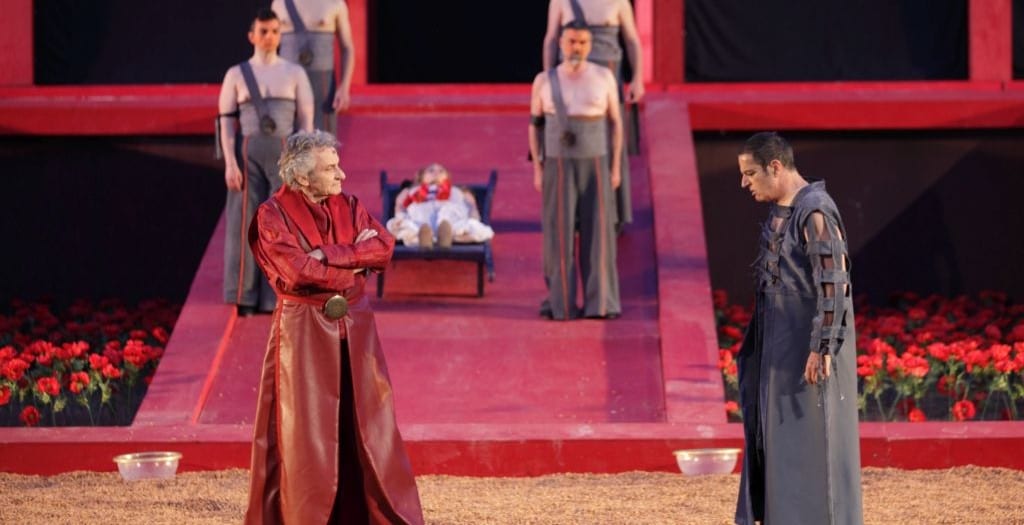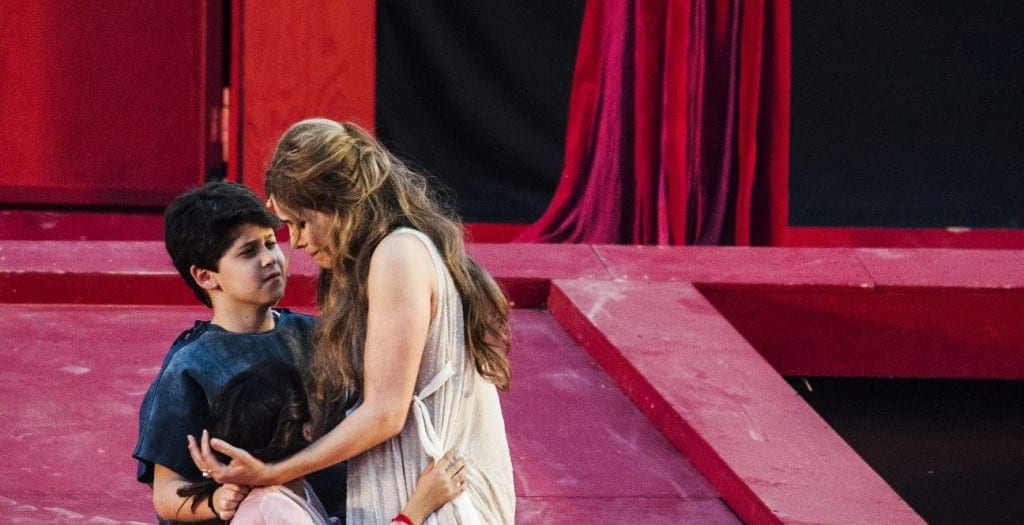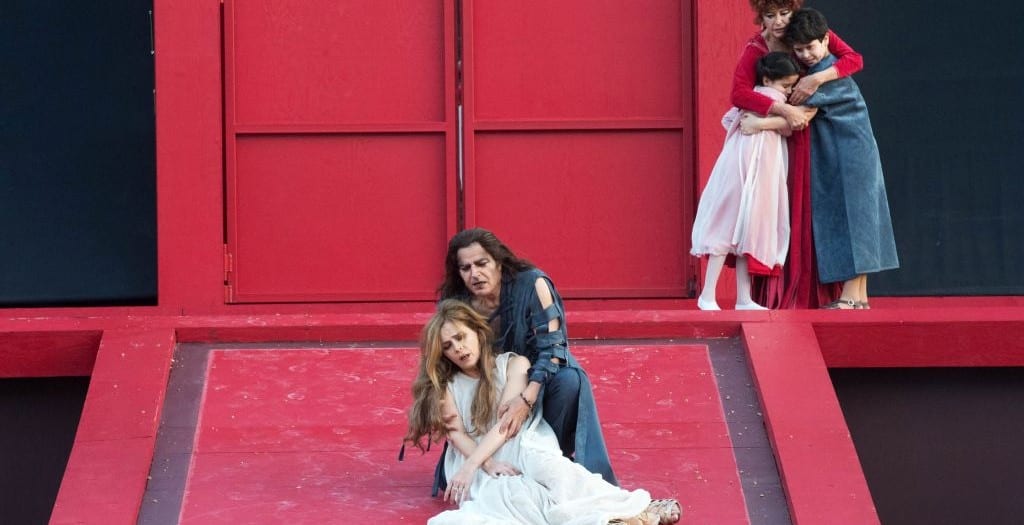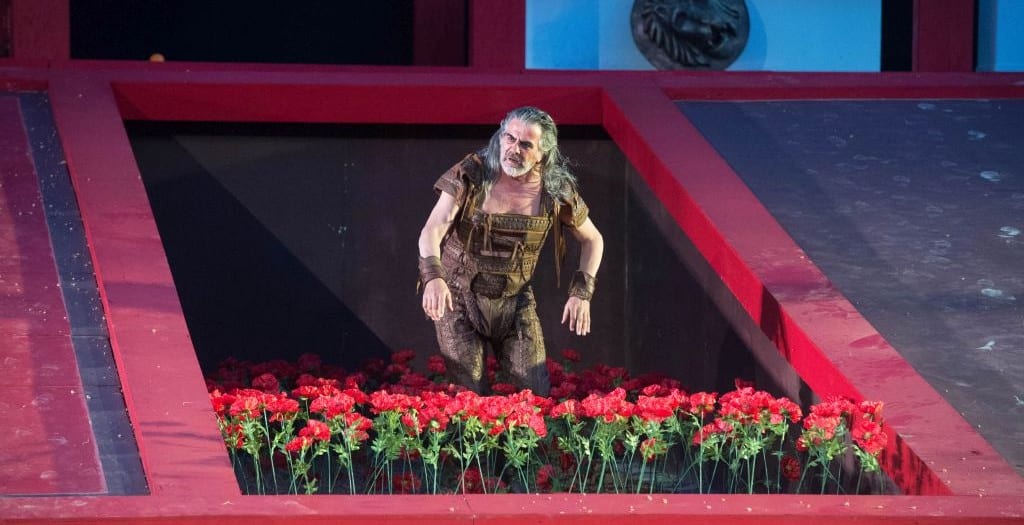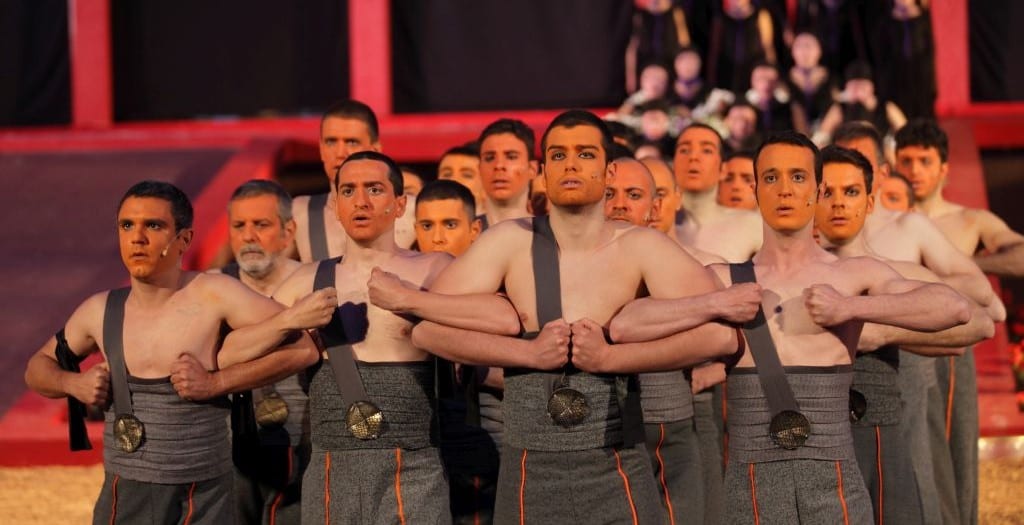Cesare Lievi’s direction of Alcestis is faithful to the Euripides’ idea of a seriocomic tragedy so he skillfully blends the two aspects. The play is set in beautiful minimalist red frames, which harmoniously contrasts with the white stone of the theatre and the green of cypresses behind. Black curtains fall and rise showing different scenes where the drama unfolds and the characters acts. The director chooses religion as a mean to communicate the spirit of Euripides’ tragedy. He borrows a lot from the Sicilian religious iconography and in my opinion it works really well.
The play opens with the staging of a funeral set in the Sicily of the 50’s, including a brass band playing a funeral march. Elsewhere in the play the chorus wears a black ribbon on the arm as a sign of mourning and when Alcestis dies she is buried like a saint with a dramatic chorus of weepers mourning her, and at the end, when she is “resurrected”, she appears in a chariot similar those chalk statue carried in a religious procession. Other elements on stage such as red poppies are reminiscent of First World War heroes. And Euripides gives Alcestis the status of an hero, she is called the noblest many times during the play, her unconditional love for the husband Admetus, brings her to death, nobody else would die for him, neither his father nor his mother. Her sacrifice, sweetly but flimsily interpreted by Galatea Ranzi, haunts the whole play.
Admetus, her husband, is the most complex character of the play. Portrayed by a discontinuous Danilo Nigrelli, appears at the same time a loving husband, a coward and a victim, he should rejoice to have his life spared but he can’t rejoice because of the suffering. The harsh confrontation with his father Pheres, a remarkable Paolo Graziosi, and their mutual accusation of cowardice expose all these contradictions. But in this case moral judgments are left to the viewer rather than imposed by the author. However, he is redeemed when still finds the strength to host his friends Hercules and giving the best possible treatment, despite the painful moment.
Hercules, portrayed by a powerful Stefano Santospago, is announced by a festive band like in an Emir Kusturica movie. He is more a comedy character, a loudmouth chap who enjoys wine and food, but in the end he is moved by the respect of Admetus towards him and decides to fight death to bring back Alcestis. The real revelation, however, is the chorus. It is not only dialoguing with the main characters but it is literally unleashed in powerful choreographies of joy, desperation and mourning amplifying the different moods of the play.
The result is a very original interpretation, oscillating between mourning and feast that keeps you engaged and entertained until the end.
For an evening of unconditional hate and love, visit the ancient Greek theatre in Siracusa, Sicily. It’s one of those places where you can still feel the genius loci. The natural setting for Greek tragedies, it is now in its 52nd year as a home for new productions. This year the Istituto del Dramma Antico presents three tragedies centered on three different female characters: Electra by Sophocles, Alcestis by Euripides (alternating every day until the 19th of June), and Phaedra by Seneca (from the 23rd to the 26th of June).

